Any possible drawbacks of relying solely on data can be avoided through data-informed decision-making. Data literacy is vital for firms that want to benefit from data-driven insights and the intuition and creativity that can only come from human experience, as this article in Harvard Business Review shows.
Data-driven decision making: A key to Strategic Growth
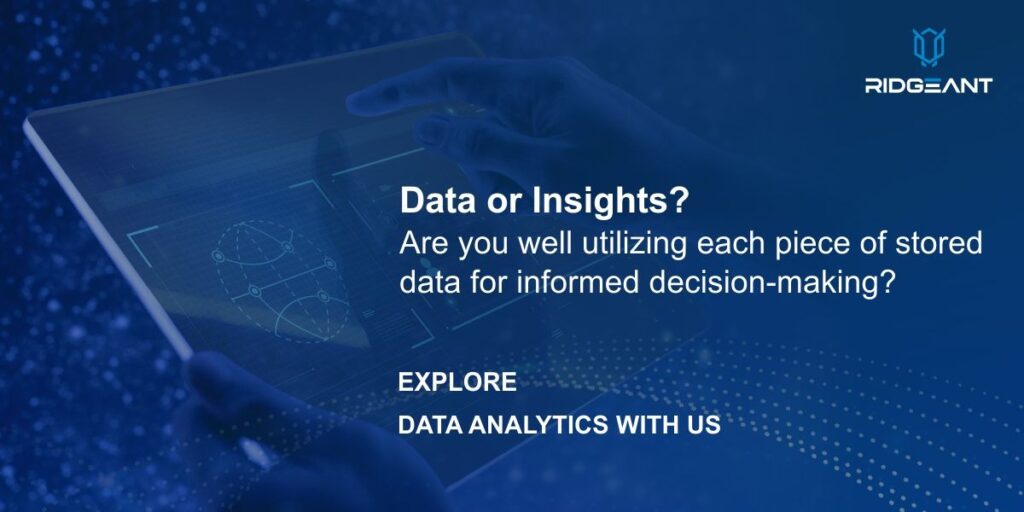
With bulk data getting generated every day, expanding organizations and increasing departments, ensuring the data is not kept in silos and is available at the organization level.
How are businesses leveraging data-driven decisions to give the competition an edge?
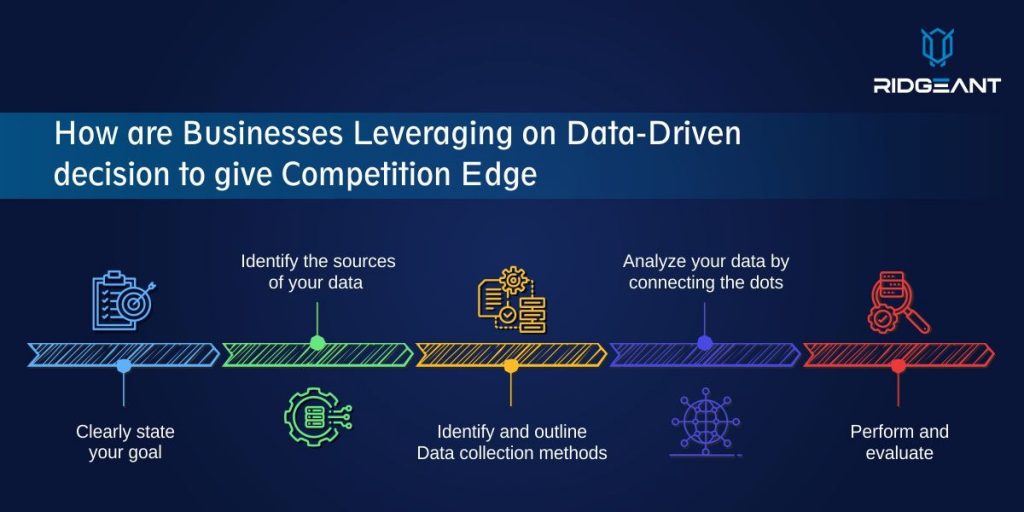
The term “data-driven decision-making” refers to making business decisions based only on observed data. Organizational decisions are based on patterns and meanings discovered via the development of cross-organizational data collection methods. Data is emphasized over intuition, personal experiences, and opinions because these inputs are considered a source of bias and a hindrance to accurate judgment in all circumstances when data is accessible.
The concept of data-driven decision-making isn’t new; it’s been around since the early 2000s when “big data” became a prominent buzzword in the business world. This was the beginning of a new era of customer data generation. Organizations were inundated with fresh information streams to inform their customer interactions at an unprecedented scale.
Business leaders increasingly saw quantitative data as the answer to all of their company’s ills, and as a result, they expanded their reliance on it. There are many ways to implement data-driven decision-making in an organization, but the following are the most common:
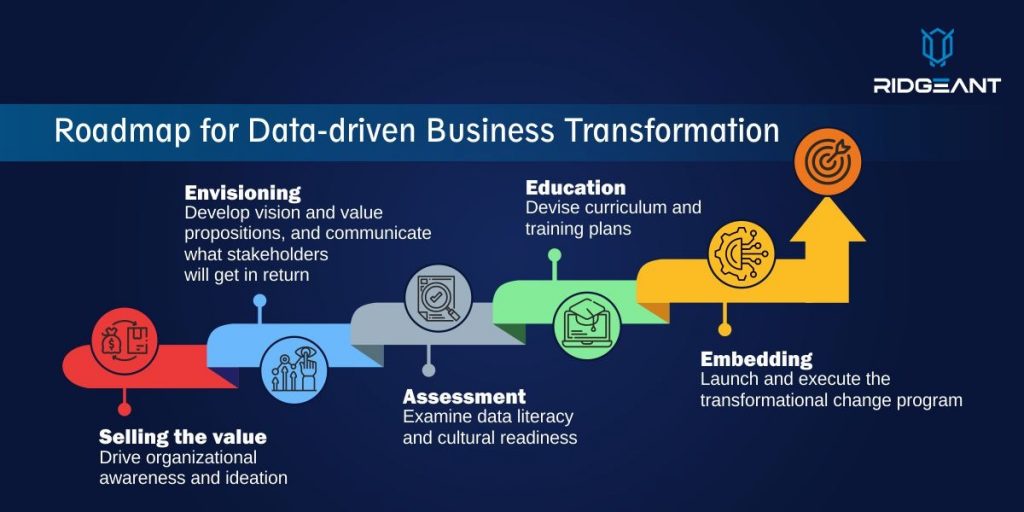
Clearly state your goal:
Are you trying to address a business problem by gathering this information? When identifying the problem, it is frequently helpful to be as explicit as possible. For example, it’s not specific enough to say, “Delivering push notifications will increase app downloads.” Proving a link between your test tactics and an increase or drop in in-app downloads will be tough.
We can achieve so much more by setting more precise goals, such as “Delivering a push notification on Sunday will increase the use of our app’s internal chat feature by 10% among persons in Los Angeles aged 25-33 who have attended more than three concerts in the past year.”
Identify the sources of your data:
Your company’s websites, mobile apps, POS systems, pre-existing client databases, and so on are all potential data sources from which to gather customer information. To have a complete and accurate image of your clients, you should collect data from many touchpoints.
Identify and outline Data collection methods:
It’s time to decide how you’ll collect the data you’ve identified from the sources. What tools will you utilize on different devices to extract data? Once the data has been acquired, where will it be stored? How much time and money do you have to devote to finding solutions to these issues? To solve these and other concerns, such as data quality and compliance with data regulation regulations, it is worth exploring how a Customer Data Platform, a centralized hub in your data stack, can help you address these issues.
Analyze your data by connecting the dots:
To make the proper judgments based on what you’ve learned so far, you need to comb through the raw data to uncover patterns and trends. A data analytics tool is usually the best option for this. Customer Data Platforms make it easy to connect the data acquired from A/B testing, attribution models, user analytics, and other sources to the relevant tool for creating insights.
Perform and evaluate:
Making decisions regarding a product, brand messaging, or whatever else may have prompted you to gather this data is now possible with the raw data at your fingertips. However, once you’ve put your decision into action, you must conduct a follow-up analysis to discover if it had the expected effect. Were the factors and data we collected correctly? If not, you should conduct further research. The quality of the data we gathered may have been a concern. What can we do to improve the outcome of this process in the future?
For marketers and product managers, the more difficult part of their job is to decide how to use the data they’ve collected and what role it should play in guiding the ship of their firm. Data alone isn’t always enough to make the right decision, given the amount of time we spend thinking about how to obtain and analyze it.. Data and intuition must coexist for a decision-making process to be successful because nearly every business decision is rife with uncertainty.
Conclusion:
Any possible drawbacks of relying solely on data can be avoided through data-informed decision-making. Data literacy is vital for firms that want to benefit from data-driven insights and the intuition and creativity that can only come from human experience, as this article in Harvard Business Review shows.
With bulk data getting generated every day, expanding organizations and increasing departments, ensuring the data is not kept in silos and is available at the organization level.
How are businesses leveraging data-driven decisions to give the competition an edge?
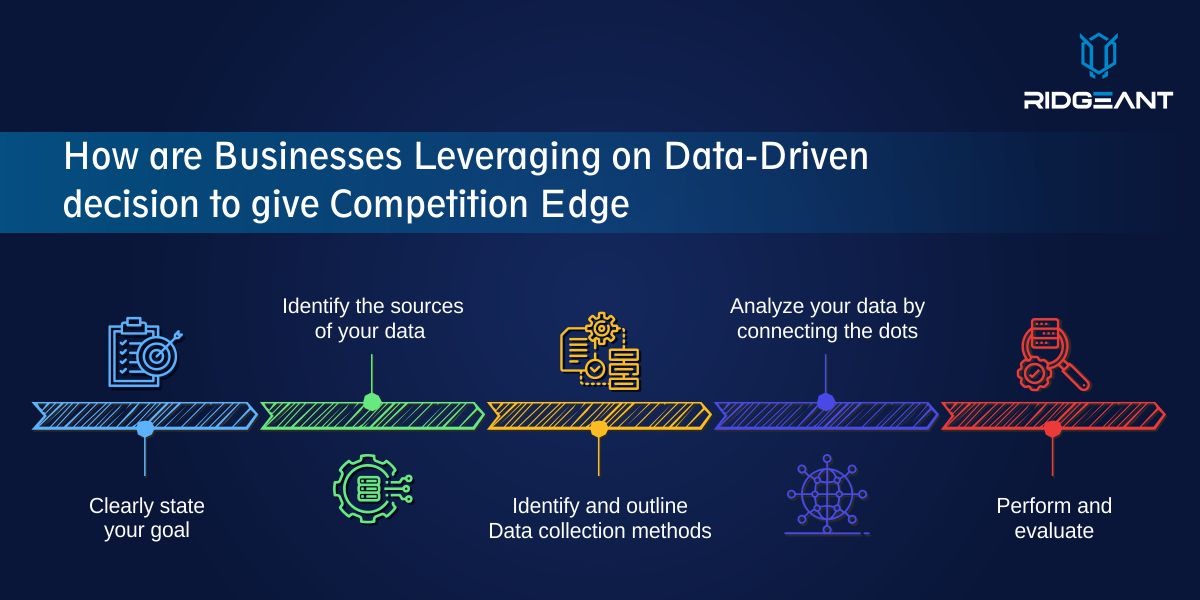
The term “data-driven decision making” refers to making business decisions based only on observed data. Organizational decisions are based on patterns and meaning discovered via the development of cross-organizational data collection methods. Data is emphasized over intuition, personal experiences, and opinions because these inputs are considered a source of bias and a hindrance to accurate judgment in all circumstances when data is accessible.
The concept of data-driven decision-making isn’t new; it’s been around since the early 2000s, when “big data” became a prominent buzzword in the business world. This was the beginning of a new era of customer data generation. Organizations were inundated with fresh information streams to inform their customer interactions at an unprecedented scale.
Business leaders increasingly saw quantitative data as the answer to all of their company’s ills, and as a result, they expanded their reliance on it. There are many ways to implement data-driven decision making in an organization, but the following are the most common:
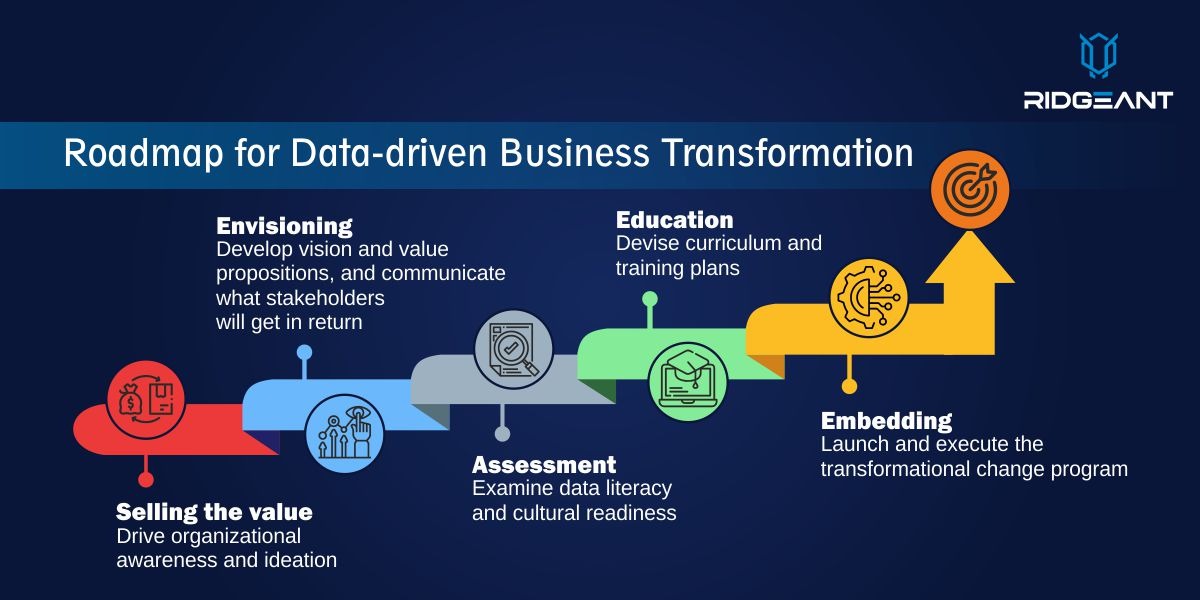
Clearly state your goal:
Are you trying to address a business problem by gathering this information? When identifying the problem, it is frequently helpful to be as explicit as possible. For example, it’s not specific enough to say, “Delivering push notifications will increase app downloads.” Proving a link between your test tactics and an increase or drop in in-app downloads will be tough.
We can achieve so much more by setting more precise goals, such as “Delivering a push notification on Sunday will increase the use of our app’s internal chat feature by 10% among persons in Los Angeles aged 25-33 who have attended more than three concerts in the past year.”
Identify the sources of your data:
Your company’s websites, mobile apps, POS systems, pre-existing client databases, and so on are all potential data sources from which to gather customer information. To have a complete and accurate image of your clients, you should collect data from many touchpoints.
Identify and outline Data collection methods:
It’s time to decide how you’ll collect the data you’ve identified from the sources. What tools will you utilize on different devices to extract data? Once the data has been acquired, where will it be stored? How much time and money do you have to devote to finding solutions to these issues? To solve these and other concerns, such as data quality and compliance with data regulation regulations, it is worth exploring how a Customer Data Platform, a centralized hub in your data stack, can help you address these issues.
Analyze your data by connecting the dots:
To make the proper judgments based on what you’ve learned so far, you need to comb through the raw data to uncover patterns and trends. A data analytics tool is usually the best option for this. Customer Data Platforms make it easy to connect the data acquired from A/B testing, attribution models, user analytics, and other sources to the relevant tool for creating insights.
Perform and evaluate:
Making decisions regarding a product, brand messaging, or whatever else may have prompted you to gather this data is now possible with the raw data at your fingertips. However, once you’ve put your decision into action, you must conduct a follow-up analysis to discover if it had the expected effect. Were the factors and data we collected correctly? If not, you should conduct further research. The quality of the data we gathered may have been a concern. What can we do to improve the outcome of this process in the future?
For marketers and product managers, the more difficult part of their job is to decide how to use the data they’ve collected and what role it should play in guiding the ship of their firm. Data alone isn’t always enough to make the right decision, given the amount of time we spend thinking about how to obtain and analyze it.. Data and intuition must coexist for a decision-making process to be successful because nearly every business decision is rife with uncertainty.
Conclusion
We use cookies on our website to give you the most relevant experience by remembering your preferences and repeat visits. By clicking “Accept All”, you consent to the use of ALL the cookies. However, you may visit "Cookie Settings" to provide a controlled consent.
Manage consent
Privacy Overview
This website uses cookies to improve your experience while you navigate through the website. Out of these, the cookies that are categorized as necessary are stored on your browser as they are essential for the working of basic functionalities of the website. We also use third-party cookies that help us analyze and understand how you use this website. These cookies will be stored in your browser only with your consent. You also have the option to opt-out of these cookies. But opting out of some of these cookies may affect your browsing experience.
Necessary cookies are absolutely essential for the website to function properly. These cookies ensure basic functionalities and security features of the website, anonymously.
| Cookie | Duration | Description |
|---|---|---|
| cookielawinfo-checkbox-analytics | 11 months | This cookie is set by GDPR Cookie Consent plugin. The cookie is used to store the user consent for the cookies in the category "Analytics". |
| cookielawinfo-checkbox-functional | 11 months | The cookie is set by GDPR cookie consent to record the user consent for the cookies in the category "Functional". |
| cookielawinfo-checkbox-necessary | 11 months | This cookie is set by GDPR Cookie Consent plugin. The cookies is used to store the user consent for the cookies in the category "Necessary". |
| cookielawinfo-checkbox-others | 11 months | This cookie is set by GDPR Cookie Consent plugin. The cookie is used to store the user consent for the cookies in the category "Other. |
| cookielawinfo-checkbox-performance | 11 months | This cookie is set by GDPR Cookie Consent plugin. The cookie is used to store the user consent for the cookies in the category "Performance". |
| viewed_cookie_policy | 11 months | The cookie is set by the GDPR Cookie Consent plugin and is used to store whether or not user has consented to the use of cookies. It does not store any personal data. |
Functional cookies help to perform certain functionalities like sharing the content of the website on social media platforms, collect feedbacks, and other third-party features.
Performance cookies are used to understand and analyze the key performance indexes of the website which helps in delivering a better user experience for the visitors.
Analytical cookies are used to understand how visitors interact with the website. These cookies help provide information on metrics the number of visitors, bounce rate, traffic source, etc.
Advertisement cookies are used to provide visitors with relevant ads and marketing campaigns. These cookies track visitors across websites and collect information to provide customized ads.
Other uncategorized cookies are those that are being analyzed and have not been classified into a category as yet.